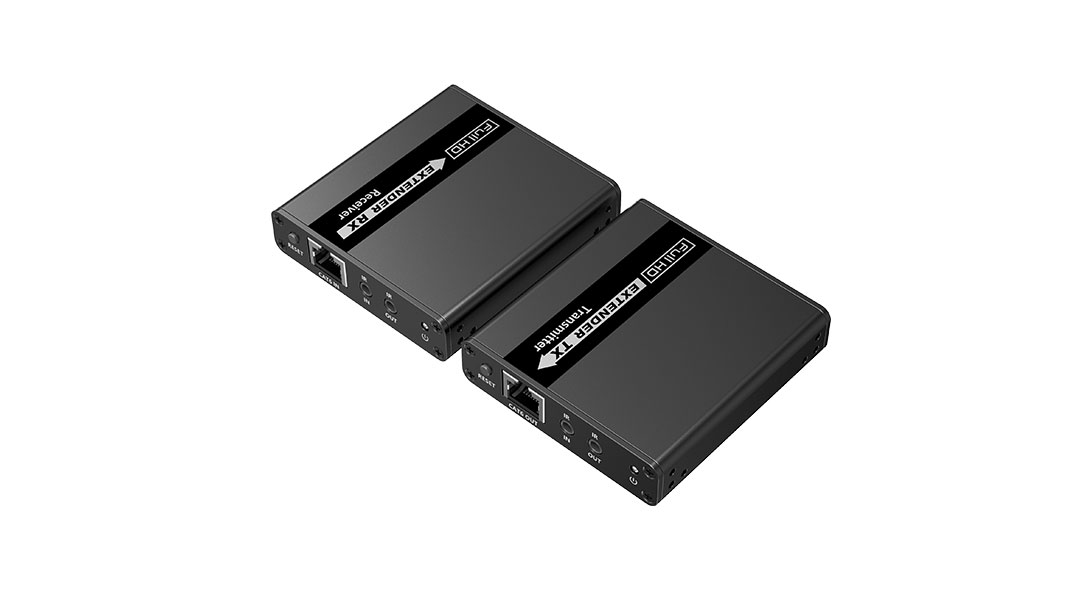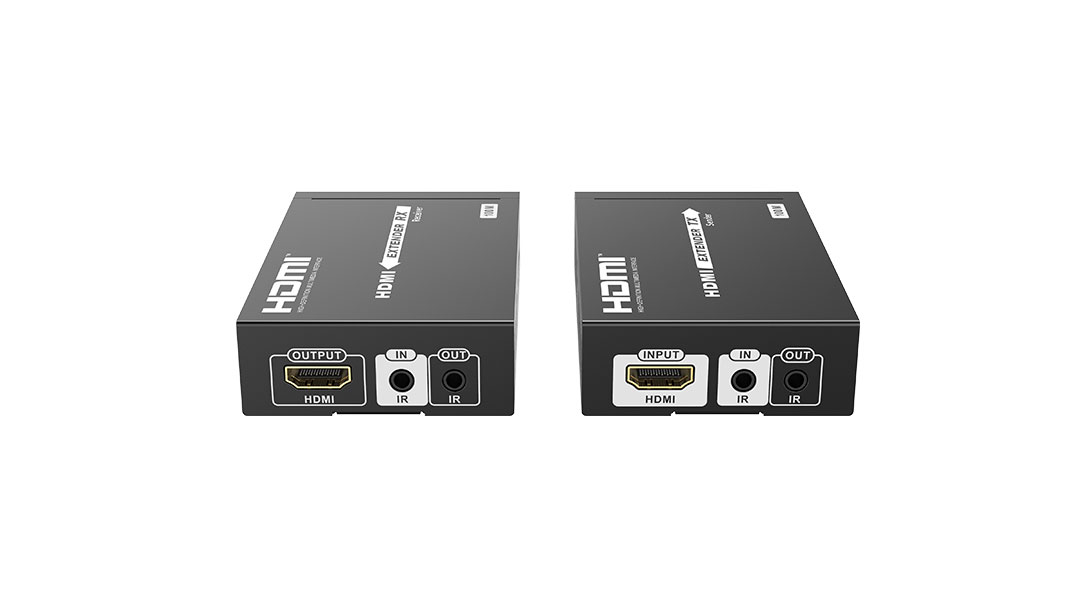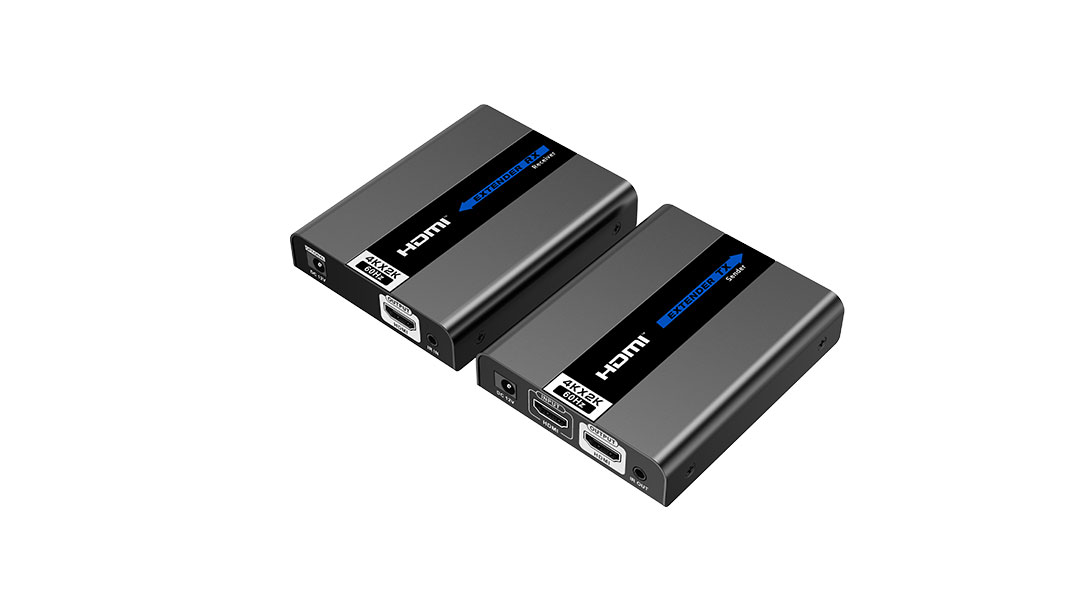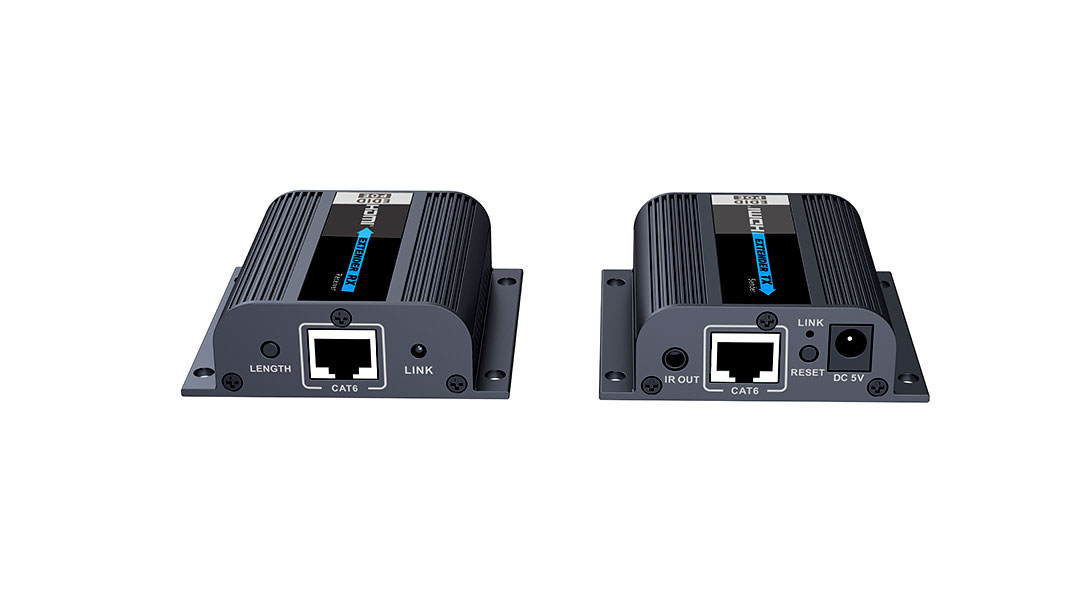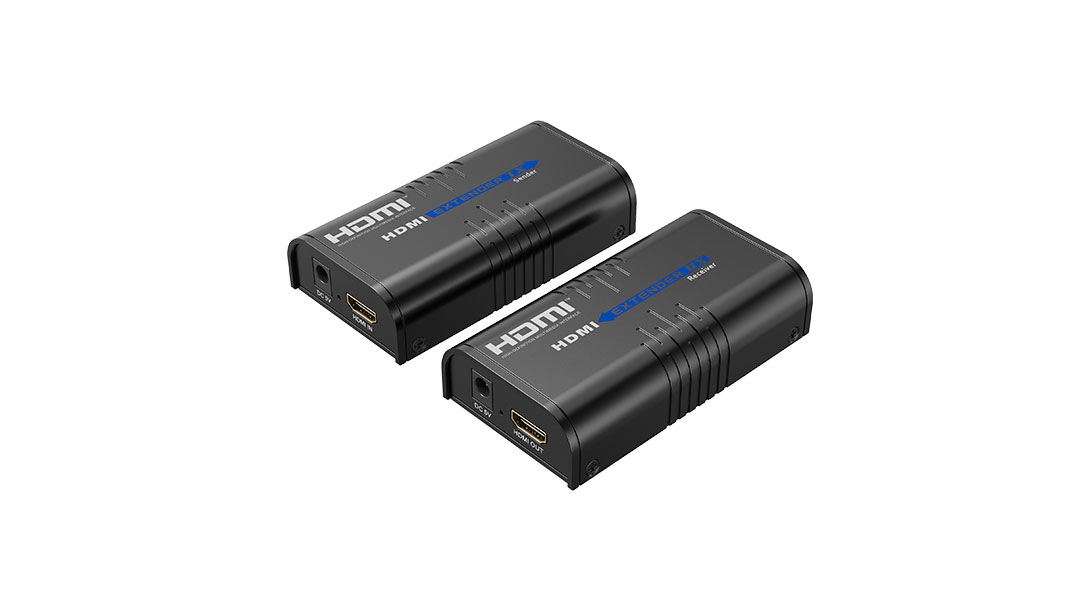


Our pursuit and company goal is to "Always satisfy our customer requirements". We continue to develop and design superior quality products for both our old and new customers and achieve a win-win prospect for our clients as well as us for Hdmi And Usb Extender,Matrix,Switcher Matrix,Matrix Switcher,Hdmi Matrix.We warmly welcome friends from all walks of life to seek mutual cooperation and create a more brilliant and splendid tomorrow. The product will supply to all over the world, such asSlovenia ,Denmark ,Muscat ,Pretoria ,Porto ,When It produced, it making use of the world's major method for reliable operation, a low failure price, it appropriate for Jeddah shoppers choice. Our enterprise. s situated inside the national civilized cities, the website traffic is very hassle-free, unique geographical and financial circumstances. We pursue a "people-oriented, meticulous manufacturing, brainstorm, make brilliant" company philosophy. Strict good quality management, fantastic service, affordable cost in Jeddah is our stand around the premise of competitors. If needed, welcome to make contact with us by our web page or phone consultation, we will be delighted to serve you.
HDMI 2.1
The HDMI 2.1 specification has been in use for some time, first of all
. The new specification is the result of an impressive effort made by the HDMI Forum, an open trade association dedicated to promoting "a wider industry to participate in the development of future versions of the HDMI specification and to further expand its ecosystem"). Interoperable products that support HDMI. "The members of the forum include many of the world’s leading consumer electronics manufacturers, as well as testing laboratories, film studios and other institutions. They are trying to develop a new HDMI standard that should have basic future-oriented capabilities ( Or-at least foreseeable). Until the end of 2020, with the emergence of the first HDMI 2.1 source component, the team’s design work and plans will finally be realized, and this component will be added to more and more existing or upcoming List of HDMI 2.1 audio components and displays on the market, finally, home users can assemble a complete HDMI 2.1 gear chain.
What's all the fuss about? In short, bandwidth. HDMI 2.0b (the predecessor of 2.1) can reach a maximum bandwidth of 18 Gbps (gigabits per second). Just a few years ago, this was a good sum of money, but the AV signals generated by today's game consoles and 4K Blu-ray players may almost consume space in the road. These devices provide 4K video at up to 60 fps (frames per second). Currently, the only source capable of outputting 4K video at 60 fps or higher is a high-end gaming PC. But by the end of this year, we will begin to see sources that can provide 8K video at 60 frames per second or 4K video at a smooth rate of 120 frames per second. In order to support higher resolutions and higher frame rates as well as some useful new features, HDMI 2.1 provides a bandwidth of up to 48 Gbps. In addition to allowing higher resolution and higher frame rates to provide smooth, fast motion details, this additional bandwidth will also support dynamic HDR, ensuring that every moment and color of the video content is displayed with the ideal combination of brightness and contrast . HDMI 2.1 also improves the audio experience and simplifies system connections through a feature called eARC or an enhanced audio return channel. eARC ensures compatibility between AV devices, while supporting the most advanced audio formats available and the highest quality audio signals. (More information about eARC at the end of this article.)
It is almost certain that the first two source components that support 8K at 60 fps and 4K at 120 fps will be Sony’s upcoming Playstation 5 and Microsoft’s new Xbox Series X, both of which are planned to be available in the 2020 holiday season. Not surprisingly, these cutting-edge game consoles should be the first HDMI 2.1 source, especially when you consider some of the enhanced gaming and media features included in the new specifications-many of them focus on smooth motion and/or reduced input Lag.
I will introduce these features in more detail in the short term, but it is worth pointing out that even if you are not interested in the game, you may find one or more of them useful.
At the 2020 International Consumer Electronics Show (CES 2020), there are 8K TVs everywhere, and the ability to transmit 8K signals at a refresh rate of 60 Hz is one of the most concerned features of HDMI 2.1 video functions. To be fair, if you have the opportunity to see LG’s Signature ZX 88-inch 8K OLED TV, you will definitely be impressed, with its horizontal and vertical resolutions twice that of a 4K display and four times the pixels ( More than 33 million). But the reality is that there is almost no 8K content at the moment, and few of us will upgrade to 8K TVs in the next year or two. Therefore, for most people, the real benefit of the video performance brought about by the increased bandwidth of HDMI 2.1 will be the ability to send 4K video at 120 frames per second, which is twice the frame rate provided by HDMI 2.0b. As Phil Jones of Sound United mentioned in a recent video interview with Audioholics founder Gene DellaSala, many gamers are excited to be able to play 4K games at higher frame rates because the smooth motion allows for smoother And play the game easily. The ability to display UHD images at 120 fps can also benefit certain movies and TV content, such as action movies, nature documentaries, and sports shows. Higher frame rates can provide clearer images, even in fast-moving scenes. Can also maintain clarity. Support the latest color space, such as BT.2020 (also known as Rec.2020), each color component has 10 or 12 bits. For commercial audio-visual installations and industrial/professional use, HDMI 2.1 can support other resolutions, including 5K or even 10K.
If you are a technical expert in video transmission, you may want to know whether compression is used in the HDMI 2.1 specification to achieve these high resolutions and frame rates. The short answer may be. The specification supports both compressed and uncompressed modes, and each manufacturer decides which mode to implement. However, even with compression, the specification includes VESA DSC (Display Stream Compression) 1.2a, which is a visually lossless compression scheme. At 60 fps, all videos with resolutions and frame rates higher than 8K require DSC, but this is not important for home users. In order to obtain a higher uncompressed resolution than HDMI 2.0b (that is, higher than 4K at 60 fps), the HDMI 2.1 specification uses a new signaling technology called FRL (Fixed Rate Link). This technology replaces the TMDS (Minimized Conversion of Differential Signals) used in early versions of HDMI, but HDMI 2.1 is backward compatible with devices using TMDS, so for home users, the conversion should be seamless and painless.
Most modern displays (TVs or projectors) cannot fully utilize the maximum potential image quality provided by the 48 Gpbs bandwidth of HDMI 2.1. why? Currently, LCD and OLED panels used in high-end consumer TVs are native 10-bit panels. To transmit 4K chroma 4:4:4 and 10-bit 4K video at 120 fps, 40 Gpbs is required. To transmit 8K images with 10-bit color at 60 fps, a maximum of 40 Gpbs (uncompressed) is also required. (If DSC compression is applied, the necessary bandwidth will be reduced to 18Gpbs.) For example, all of LG's 2020 OLEDs have HDMI 2.1 ports, but they are limited to 40 Gbps instead of 48 Gbps of bandwidth. But because they use native 10-bit panels, 40 Gbps is enough to maximize the panel's functionality. Due to the limitations of these panels, in any case, 40 Gbps can now be regarded as the maximum bandwidth required for actual scenarios.
Many experts agree that the most significant improvement in video quality achieved in the UHD era is not the inherent high resolution of 4K video, but the emergence of high dynamic range (HDR). With HDR, video content can provide a greater range of contrast from dark to light, resulting in a high-impact experience. The result is that the light and dark parts of a given image have brighter whites, darker blacks, and improved details. This improved contrast, combined with more detail in the expanded color space, helps provide a more intrinsic video experience. The HDR solution can be static (meaning it uses a set of metadata to optimize the image brightness curve of the entire video), or dynamic, which means it uses dynamic metadata to optimize the brightness of the image scene by scene or even frame by frame. . Frame by frame. Static HDR solutions (such as HDR10) and dynamic HDR solutions (such as Dolby Vision) can be delivered on previous HDMI versions, but the HDMI 2.1 specification supports a variety of static and dynamic HDR solutions to ensure that dynamic metadata is not used in the future. It must be bound to a proprietary format (such as Dolby Vision), which requires the manufacturer to pay a license fee. HDR-enabled devices that implement HDMI 2.1 will transmit static and dynamic HDR metadata through the HDMI interface in a standardized way to ensure that the metadata will be delivered correctly regardless of the manufacturer of the product. To ensure that users will get all the benefits of dynamic HDR without compatibility issues, all HDMI 2.1 devices must undergo the same mandatory compliance testing.
As mentioned earlier, the HDMI 2.1 specification includes many features designed to improve the gaming experience, including variable refresh rate (VRR), automatic low latency mode (ALLM), fast media switching (QMS) and fast frame transfer (QFT). . I will now give a more in-depth introduction to these features to explain their full meaning and how they can benefit non-gamers as well.
VRR aims to reduce or eliminate lag, jitter and frame tearing, thereby making the game process more smooth and detailed. But what does this mean? When you play a video game, the graphics processing unit (GPU) in your computer or game console will render the image faster or slower based on what is happening on the screen and the processing power available. But traditionally, the refresh rate of a TV or monitor is static, which means it will never deviate from the specified frequency (for example, 60 Hz). It doesn't matter whether the GPU needs more time to render a particular frame in a particularly complex scene-this happens often, depending on the power of the GPU and the selected resolution-the display refreshes when it refreshes. If the GPU has not finished rendering the next frame before the display is refreshed, the GPU must repeat the previous frame or send an incompletely rendered frame. result? Occasionally there will be a "tear" picture, which will bring a long-lost jury experience. VRR solves this problem by allowing the source and display to work together and changing the refresh rate as needed. The GPU can wait until the next frame is ready before sending it to the display, and the display can wait to refresh until the next frame is received. By synchronizing the refresh rate of the display with the refresh rate of the content generated from the source, the gaming experience will become smoother and more direct. At any given time, the refresh rate may be in any range between 30 Hz and 120 Hz, depending on the burden of the GPU at this time. If you are not a gamer, you might think that VRR has nothing to do with your needs, but that is not the case. Facts have proved that many Web-based video content end up with abnormal frame rates, which may be because it is produced using a variety of non-standardized hardware and software combinations. So if you like watching YouTube and other Internet content (and not who?), you might benefit from VRR because your TV will be able to display the content at its original frame rate.
The automatic low-latency mode is relatively simple. Many TVs (and some AV receivers, such as recent Denon and Marantz models) have a low-latency mode or "gaming mode" that reduces input delay-the time the TV or monitor actually displays the signal has been received. If you are playing a video game, input lag may be the main part of the delay experienced between pressing a button on the controller and seeing the character/game reacting on the screen. In some competitive online game scenarios, a short lag time will give you an advantage over other players. This is like extending your own personal reaction time, which is essential for both gamers and athletes. But before using ALLM, you must manually set the TV to game mode (by entering the menu system) before playing games, and then manually set it to the normal environment when you want to watch TV or movies. (Since the low-latency mode reduces input lag by cutting into the image processing point, the resulting image quality is not optimal for normal viewing.) The automatic low-latency mode allows game consoles, PCs or other devices to transfer to the following devices Send signal: automatically turn on the TV in low-latency game mode. When the signal source no longer needs to reduce latency-suppose you stop playing games on the PS5 and then use the console to play a movie-the signal source will disable the signal and the TV will return to its normal settings for the best picture quality. Once again, this player-centric feature may prove useful for non-gaming activities, such as video conferencing (which is becoming more and more important during the coronavirus pandemic), or even karaoke.
Therefore, ALLM aims to reduce the lag time inside the TV, that is, the time it takes for the TV itself to display the received image. Fast frame transmission is also designed to reduce latency, but it is not something related to the settings in the TV, but a system inside the HDMI cable that reduces the time required for video frames to pass from the original source device (such as a game console). Or a PC, and then connected to a display device-it can be a TV, a computer monitor or a virtual reality headset. The delay mentioned here is called "display delay". This term refers to the total time required to fully render and ready to leave the GPU and then through the output circuit of the signal source, through the downstream of the cable, into the display, through the processing circuit of the display, and finally through the following steps: display on the screen . QFT transmits each frame at a higher rate to reduce the overall display delay, thereby further improving the snapshot speed, response speed, and providing real-time interactive virtual reality.
Fast media switching is designed to solve a specific problem. Suppose you are watching a movie trailer through a streaming service. It is not uncommon for different trailers to use different frame rates (such as 60 Hz, 50 Hz or 24 Hz). Similarly, many streaming media devices (Roku, AppleTV) use 60Hz for their menus, but movies use 24Hz as the frequency. When switching from one frame rate to another, all devices in the HDMI connection chain must change their clocks and re-synchronize, resulting in an instantaneous interruption called "bonk". Before the content is finally displayed, the viewer's TV screen will turn black. QMS uses the VRR mechanism to allow these frame rate changes without interrupting the viewing experience. The entire system can be quickly and smoothly changed from 60 Hz to a lower frequency, down to 24 Hz, without being clumsy.
Unlike the previous version of the HDMI specification, the 2.1 specification includes a new cable called the "Ultra High Speed HDMI Cable", which is the first cable defined by the HDMI Forum. This new cable is "the only cable that meets strict specifications and is designed to ensure support for high-resolution video modes (including uncompressed video).
with
) And all other HDMI 2.1 features", according to the HDMI Forum. The increased bandwidth capacity of the cable can support up to 48 Gbps. Although the specification does not specify the length of the cable, the passive cable may reach a maximum of about 3 meters before the bandwidth starts to drop. The new cable will also “exceed the requirements of the latest international EMI standards to significantly reduce the possibility of interference with wireless services such as Wi-Fi.” All ultra-high-speed HDMI cables must pass the mandatory ultra-high-speed HDMI certification program, which includes Test conducted at the HDMI Forum Authorized Testing Center (ATC). The certification program is designed to ensure the quality and functional support/compatibility of all ultra-high-speed HDMI cables put on the market. Qualified cables will be affixed with the official ultra-high-speed HDMI on the package Certification label, and the outer sheath of the cable will also be labeled.
Compared with HDMI 2.0b, the HDMI 2.1 specification provides more functions.
Send as much data as possible over the cable at one time. Therefore, in order to take full advantage of HDMI 2.1, it is necessary to use a new ultra-high-speed certified HDMI cable. Indeed, in the end, you will need to upgrade to a newer cable to benefit from all of the above features. But the reality is that many people don't need all the new cables now to enjoy the most important features to them. Some of the most important functions in the specification, such as VRR, ALLM, eARC terminals, do not require new cables. This leads us...
In terms of audio, HDMI 2.1 mandates support for a function called eARC or Enhanced Audio Return Channel. As the name suggests, this is an updated and more powerful version of the HDMI ARC protocol, which was added to the specification table in 2009 and was introduced as part of the HDMI 1.4 version. Before introducing eARC in detail, let's take a review course on ARC. Before the advent of ARC, the HDMI cable was a one-way path for audio/video signals, which propagated from the source to the downstream, usually through the AV receiver or processor, and finally to the display. Consider the setup about ten years ago. My profile includes a Blu-ray player, a cable box and a Roku HD-XR ribbon. My roommate is a gamer, so I often connect to a game console. All these sources send their signals to my Denon receiver via HDMI cables, and then to my Pioneer TV. This is pretty typical and everything is fine. However, with the advent of smart TVs, things have become more complicated, and people have begun to use streaming media applications built into TVs as the main source of video content. In a setup like mine, even if the TV and receiver are connected via HDMI, the digital audio signal cannot be sent from the TV to the receiver via the cable. Doing so will require the signal to be transmitted "upstream" along a unidirectional HDMI cable. Therefore, in order to route the TV's audio to the AV receiver or soundbar, instead of the TV's internal speakers, a second cable is needed-almost always an optical Toslink cable. This not only adds another ugly cable to deal with, but also limits the sound quality. Some TVs can pass multi-channel audio signals to the receiver or soundbar via optical Toslink, but many other TVs only send stereo signals. (Today, only a few Sony TVs will send multi-channel surround sound signals via Toslink.)
In order to solve all these problems, the audio return channel function was created. ARC effectively turns HDMI into a two-way path, so that the TV can send audio back to the AV receiver, processor or soundbar via the HDMI cable. With ARC, in theory, it becomes easier to enjoy audio from TV streaming applications or antennas. Moreover, this also means (in theory) that you can choose to connect all HDMI sources directly to the TV instead of connecting to the audio device (if this is easier to set up). But ARC has its own limitations and problems. First, it sometimes runs automatically, and sometimes requires users to adjust various settings that may be included in the TV menu system. It also allows manufacturers to manually select which protocol elements they want to include and which ones to ignore. For example, some TVs can send 5.1 Dolby Digital or DTS audio tracks to the receiver via ARC, while other TVs still only support two-channel stereo audio tracks. Finally, ARC cannot deliver high-quality lossless codecs, such as Dolby TrueHD and DTS-HD Master Audio. If you connect a Blu-ray player directly to the TV via HDMI, and then try to use ARC to send audio to the receiver, at best you can only get a degraded data stream that relies on a lossy codec. Although ARC can theoretically support object-based immersive audio formats (such as Dolby Atmos) streamed from Netflix or Amazon Prime Video, they also rely entirely on lossy codecs (such as Dolby Digital Plus) instead of full Fat lossless version. ARC simply does not have the ability (or the required bandwidth) to handle uncompressed and lossless audio.
The enhanced audio return channel aims to solve all the problems of ARC by improving the sound quality function while providing an easier-to-use way. With eARC, the original full-resolution audio signal can be sent "upstream" from the TV to the audio device. Dolby TrueHD, Dolby Atmos, DTS-HD Master Audio and DTS:X audio tracks can all be transmitted in real, lossless form. Due to the greatly increased bandwidth of HDMI 2.1, eARC can handle 32 channels of uncompressed audio, or up to 8 channels of 24-bit/192kHz audio. The audio processing power of the TV is no longer limited, because eARC requires an uncompromising approach to compatibility. Whether the audio signal comes from the TV’s internal application, or from a Blu-ray player or game console directly connected to the TV via HDMI, eARC will pass the full resolution sound signal back to the receiver, front/professional or sound. -bar.
Another benefit of eARC is that the technology integrates an improved "handshake" process between compatible devices. The original ARC protocol relied on HDMI CEC (Consumer Electronics Control), which usually had to be activated manually and did not always work properly. The new eARC standard eliminates the need to activate CEC, allowing users to get up and running without additional steps. This also means that users should be able to control various functions on various devices (such as turning on the power of the TV and then adjusting the volume of the receiver) without using multiple remote controls. The original ARC version should be able to use this function, but it was not ready before the emergence of eARC.
As mentioned above, eARC does not require a new ultra-high-speed HDMI cable. According to HDMI.org, both standard HDMI cables with Ethernet and high-speed HDMI cables with Ethernet can be used. Since using eARC's advanced audio format requires additional bandwidth, some very old (and/or very long) HDMI cables can be laborious, but before spending money on a new cable, be sure to try it with your current cable. The bad news is that some existing ARC-enabled products may not work with new products that use eARC. It is entirely possible for manufacturers to design products that are compatible with both ARC and eARC, but backward compatibility is not a necessary feature. In order for eARC to work properly, both the TV and audio equipment must have compatible HDMI eARC slots. The good news is that eARC (along with automatic low-latency mode and variable refresh rate) is not strictly limited to brand new HDMI 2.1 devices. These features are the most important part of the HDMI 2.1 specification. These features can be added to (or have been added to) certain HDMI 2.0 products through firmware updates. Some HDMI 2.0 TVs launched in 2019 and early 2020 have been updated to support eARC, and AV receivers of Onkyo, Pioneer, Sony, Denon and Marantz have also been updated.
There must be a lot of information in the HDMI 2.1 specification that needs to be unraveled, but the main takeaway is that the specification will provide improved audio and video and a better user experience. Considering the current situation of the global COVID-19 pandemic, how many HDMI 2.1 signal sources will arrive in 2020 or even 2021. CES 2020 is equipped with HDMI 2.1 products, but many manufacturers are facing serious delays in production and shipping plans. Nevertheless, there are already products that can be prepared for the future. All of LG's 2020 OLED TVs have HDMI 2.1 ports. Sony's two top LCD TVs and Samsung's flagship 85-inch Q950TS 8K QLED TVs also have HDMI 2.1 ports. Yamaha stated that its 2020 receiver product lineup will support HDMI 2.1 and will provide services in time for this holiday season to handle the sound of your new Playstation 5 and Xbox X series games. (Again, check the feature list of each product to make sure it supports the features you care about!)
Do you plan to upgrade the system to support HDMI 2.1? What is the feature you are most interested in? Share your thoughts in the relevant forum topics below.
Many thanks to Phil Jones of Sound United for providing HDMI 2.1 education in our YouTube interview series.
For more information, please visit
Jacob is a music lover and audiophile who likes to persuade his friends to buy audio equipment that they can't afford. He is also a freelance writer and editor in Los Angeles.
Confused about what AV Gear to buy or how to set it up? Join our exclusive
!
Copyright © 1998-2021 Audioholics, LLC. all rights reserved.
Product reviews, transactions and latest technology news
.
. Evil problem solver. Total number of writers.
. Enthusiastic player. Twitter's buff.
Bestgamingpro is made by
Necessary cookies are absolutely essential for the normal operation of the website. This category only contains cookies that ensure the basic functions and security features of the website. These cookies do not store any personal information.
Any cookies that are not particularly necessary for the normal operation of the website. These cookies are specifically used to collect user personal data through analysis, advertising and other embedded content, and are called unnecessary cookies. You must obtain user consent before running these cookies on your website.
HDMI is a great technology, but if you have to transmit cables over long distances, they are not the most reliable. On the other hand, Ethernet cables (or more accurately Cat5e/Cat6 cables) are more suitable for traveling many feet. It is also cheap. solution? Use an Ethernet cable to extend your HDMI connection. All you need is this small adapter.
As Apartment Therapy Tech pointed out, the cost of running HDMI over a long distance is about 80 cents per foot, while Cat5e/Cat6 is only 15 cents. It seems to be a bargain.
: Some people think it’s better to spend only expensive, lengthy HDMI cables,
. We are not saying that a method is correct/best, but just want to provide you with two aspects of the story so that you can make an informed choice.
($18) | Unit price passed
Coupled with the cost of two of the converters, you have to run more than 55 feet to make it cheaper than ordinary HDMI.
This
Essentially
. The advantage of using an SDI wireless video system is that it can be compatible with more cameras, and you should be able to get better latency than when using HDMI.
Atom 500 SDI is touted as an affordable SDI and HDMI wireless video system that can transmit video from almost any camera to receivers and applications. Affordable wireless video solutions have appeared everywhere in the past year, and their functions have continued to improve.
Atom 500 SDI is aimed at professional users, while Atom 500 is aimed at Prosumer, YouTube, and Vlogger markets.
Atom 500 is composed of SDI / HDMI TX and SDI / HDMI RX units. Both work on the 5GHz frequency band.
Over the years, I have reviewed many Vaxis products and their build quality has always been good. The Atom 500 SDI shell is basically the same as the Atom 500. As I pointed out when reviewing the Atom 500, none of these systems seem to be as rugged and durable as the company's other products. Vaxis must keep weight and size reduced, which is undoubtedly a compromise.
Having said that, I have no concerns about the build quality of the Atom 500 SDI. However, it is still a fairly sturdy product, but once you start targeting professional users, they will expect its quality to be much better than casual users.
Interestingly, Vaxis changed the design of the three buttons on the front of the TX and RX units. They are no longer as flush as on the Atom 500, which makes them easier to use and operate.
Atom 500 SDI TX has dual inputs, but unlike Atom 500, it has no loop-through function because TX does not have any output. If there is no output on the TX unit, you will not be able to perform operations such as looping out the signal through the monitor.
The Atom 500 SDI RX and TX units weigh 170 grams (5.99 ounces), which is only 12 grams heavier than the Atom 500 158 grams. Their physical dimensions are 113mm x 63.5mm x 20mm. This makes it slightly larger than the Atom 500 (105mm x 60mm x 22mm).
This weight and size really make it very small and compact, for wireless video systems that have both SDI and HDMI functions.
I personally think that the Atom 500 SDI system is very suitable for use with small and medium-sized digital cinema cameras with SDI capabilities.
Atom 500 SDI comes with TX unit, RX unit, user manual and USB Type C cable. Unlike the Atom 500, you will not get a cold shoe or cold shoe platform.
On the front of the TX and RX units is a small OLED display where you can see important information and make changes. The only change you can see with the new Atom 500 SDI is that you can now display the temperature of the device in Fahrenheit or Celsius.
Since Atom 500 SDI uses 5GHz channels, Vaxis introduces a new automatic channel selection by default. The RX and TX units will continuously scan the surrounding environment and use the best available channel.
For those who want to manually select a channel, Vaxis also provides this feature for you. You can enter the channel scan mode, where the system will find the best available channel for you to use.
Another nice feature of Atom 500 SDI is that you can prioritize image quality or latency as needed. If the image quality is more important, the system will give priority, if the delay is more important, it will reduce the quality. Remember, you can only select these options on the RX device. If you only use the Vaxis Vision App with the TX unit, these parameters cannot be changed.
Both TX and RX units have built-in antenna units. Since the external antenna is usually longer than the actual RX or TX unit, this does minimize the footprint of the system.
Vaxis includes two 1/4 20" mounting holes on both TX and RX units. One on the side and one on the bottom. Strangely, there is a label for cold shoe mounting, but there is no actual hole to fix it.
Vaxis uses H.265 encoding to transmit signals, which can be viewed through applications on smartphones and tablets. This is very clever because it allows Vaxis to send a better signal while using less bandwidth. This is what we see now that many companies are doing.
According to Vaxis, the delay time is less than 0.08 seconds (80 milliseconds). I will further test the Atom 500 SDI latency through the application and the output of the RX unit.
Sending a wireless video signal so that multiple people can view it on a dedicated application at once is nothing new. Teradek has been doing this for many years, and recently, we have seen very cost-effective systems from companies such as Holland, Acsoon and Zhiyun.
The Vaxis Vision application is a separate dedicated application for Atom 500 and Atom 500 SDI. It allows anyone with an iOS device to view the wireless signal from the TX unit.
The Vaxis Vision app is more than just a viewer. It enables you to activate monitoring functions such as peaking, focus punching, frame guidance, etc. As long as it supports HDMI recording trigger, you can even remotely roll and record the camera. (Please check if it can be used with SDI)
I will tell you how it works and further performance in the review.
Both Atom 500 SDI RX and TX units have built-in battery boards that can be loaded with Sony NP batteries. You can also choose to power it via USB-C.
The battery plate has been redesigned and now has a spring-loaded mechanism to help secure the battery. The battery will not move or sway.
Vaxis is pleased to provide you with two ways to power your equipment. The use of built-in batteries can reduce the size, but most professionals do not want to use devices with built-in batteries unless they can power the device for a long time.
Running the Atom 500 SDI with Sony NP batteries on small and medium digital cameras will not make it too heavy. However, I do hope that Vaxis has at least some kind of industry standard power connector installed on the TX unit. In this way, you can power it directly from the camera's output.
Both TX and RX units have built-in fans. If you use TX near the onboard microphone, you may hear sound. I recommend placing the TX unit away from any onboard microphones.
In a very quiet room where recording is important, this can also be a problem, but you can turn off the fan as needed.
The fan on the TX is indeed much larger than the fan on the RX.
You can change the fan setting between Auto/High/Off. You can see a temperature indicator on the OLED screen, but I am not sure what temperature the Atom system can safely work to.
With SDI and HDMI, you can only set 1080 to 59.94p at most.
Atom 500 SDI can transmit the following content via SDI:
Atom 500 SDI can transmit the following content via HDMI:
You can shoot in HD up to 60p, and depending on your camera, it can still send images through the TX unit. I tried to feed 23.98, 24, 25, 30 and 60p signal sources to the TX unit and they all worked. Except for 4K signals above 30p, it will not. I tried all these tests with Panasonic S1H.
As mentioned earlier, both the Atom 500 SDI TX and RX units have SDI and HDMI ports. TX has SDI input and HDMI input. RX has an SDI output and an HDMI output.
The TX and RX units also have USB-C/DC inputs.
The system can be password protected, so only the person you want to view the signal can use. This is a nice feature that many other affordable wireless video transmission systems do not.
As I always say, a good wireless video solution should be easy and fast to set up and get up and running. To be honest, this shouldn't be a difficult task, and if so, then I think the product has failed.
Like most Vaxis wireless systems, the Atom 500 SDI is actually plug and play. You just need to turn on the power of the TX unit, input the video source, then turn on the power of the RX and connect it to the monitor.
Or, you can turn on the power of the TX unit, input the video source, and then start the application.
If you use TX and RX units to send signals to the monitor at the same time, you only need to make sure that both TX and RX are on the same channel. After everything is normal, I will get a picture within 20 seconds. Twenty seconds is about twice the time it takes for other Vaxis wireless systems I have reviewed to receive photos. In any case, the Atom 500 SDI system is fast and easy to use.
Now, if you want to send an image from TX and view it on the app, then this does involve several steps, especially the first time you use it.
First, you need to download the Vaxis Vision app. Then, once it is turned on, it needs to be connected to the TX unit.
When you try to connect for the first time, this screen greets you. At first, I didn't know what to do because the instructions contained therein did not mention this step.
My final conclusion is that on the TX unit, you need to enter the menu and pair. Here it will also provide you with VX_# and password.
After entering this information, you will be asked to join the Vaxis Vision WiFi network.
After joining, the following screen will greet you. The pictures from the TX unit and a bunch of icons will be there.
Once completed once, you don’t have to enter VX# and the password entirely. However, you need to do this the first time you connect to a new device. If you plan to place it on a customer’s phone or tablet, you need to consider this time.
Now, back to usability, I want to see what happens if I lose the connection, so I turned off the TX and turned it back on. Once the TX is turned off, you will lose the pictures on the app (as expected). Once I turned the TX device back on, the RX device recovered the signal within 22 seconds. This is too slow.
If you are using the Vaxis Vision application and then turn off the TX and then reopen it, you will lose the picture, but the picture will not be restored unless you restart the application from the beginning.
So, what if I unplug HDMI or SDI from the camera? The system can re-establish the connection between the monitor and the Vaxis Vision application in less than 4 seconds.
So, what happens if you suddenly change the camera's frame rate from 23.98p to 30p when the system is turned on? It took about 10 seconds for the picture to return. When I changed the camera back to 23.98fps, it also took about 10 seconds to restore the connection.
In the final test, I want to change the operating channel and see what happens. I changed the receiver to another channel, and then changed the sender to the same channel. This time it took me about 20 seconds to finish the photo.
The app is fairly basic, but it does have some nice features. You can zoom in focus by 2x and 4x, and you can use your finger to move around on the screen.
There are also peaks and zebras, and you can change the intensity of both.
Even though the intensity can be changed, the color of the peak cannot be changed, but the peak stays in red.
You can also set frame guides and center marks, as well as adjust the brightness, contrast, and clarity of the screen.
Unfortunately, without these menu items, you cannot get a clear view, at least as far as I know. Of course I tried my best to see if I could. I think this is a bit wrong with the design of the application. Although I am sure that this problem can be easily resolved by updating the application. Having said that, I mentioned this to Vaxis 6 months ago and I haven't added it yet.
In my opinion, the image quality of the signal appearing on the app is very poor. The image looks very low resolution and not clear at all. At the top, you can check the image quality on the iPhone through the Vaxis Vision app, and on the left you can see NinjaV.
Vaxis also stated that as long as the app supports HDMI recording triggering, it will allow you to remotely scroll through the recording camera. I tried this operation on Panasonic S1H, but it didn't work.
Zero latency (or close to zero latency) is one of the important reasons why you spend more money on high-end systems. Most high-end wireless video systems have almost zero latency, and many systems with limited budgets can have significant latency, especially those that use HDMI. In theory, since Atom 500 SDI uses SDI, the latency should be very low. Is that right? Well, let's find out.
I used Kinefinity MAVO LF for some delay tests and output the SDI signal from the camera to the Atom 500 TX. Then, I connected the monitor to the Atom 500 RX via SDI.
I measured the average delay in three test series of 140ms. Even for this price system, the latency is quite high, especially when using SDI. Unexpectedly, when the SDI signal is sent to the TX unit and monitored using the Vaxis Vision application, the average delay is 71ms, which is basically half of the delay when using the RX unit.
Now, when I try the HDMI test, the TX unit will not receive any HDMI signal from the camera. This seems to be a problem between Kinefinity MAVO LF and Atom 500 SDI.
To test the HDMI delay, I used Panasonic S5. In a series of three tests, I found that the average delay is 158ms, which is only slightly worse than the results obtained when using SDI. When I feed the HDMI signal into the TX unit and then use the Vaxis Vision application, I get an average delay of 123ms. Strangely, this is better than what I got when I used the RX device.
You should never test the image delay with just one camera, so I did another test with BMPCC6K and Atomos Ninja V. I output the signal from the BMPCC6K to the TX unit via HDMI. Then, I connected the RX unit to Atomos NinjaV via HDMI. I also opened the Vaxis Vision app on the iPhone. This test is performed with the RX unit priority set to delay.
Above, you can see a test that clearly shows the delay between the subject, the image on the BMPCC6K, the image output from the RX unit to the Ninja V, and the Vaxis Vision application.
In a series of four tests (for this reason, I did not calculate the delay from the stopwatch being shot to the camera), the average delay I got was as follows:
What do these numbers actually mean? Well, anything below 100ms is considered low, because most people won't feel such a small delay. Once more than 100 milliseconds, we will feel a significant delay.
What you obviously need to know is that the amount of delay you will see varies from camera to camera, especially when using HDMI.
You see, HDMI has inherent image processing issues, and yes, if you combine it with one of the cheaper wireless video systems, there may be a lot of delays. Ultimately, you need to live with an acceptable limit.
The strange thing is that the image waiting time when using the Vaxis Vision application is shorter than the image waiting time when using the RX unit. Usually the opposite is true.
I recently checked
, Even if this is an HDMI-only device, its latency is better than that of the Vaxis Atom 500 SDI.
When I tested the HDMI delay of Accsoon from Kinefinity MAVO LF, I set it to
spread. These results are excellent for inexpensive wireless video systems.
You can use the Atom 500 SDI RX and send the signal to the monitor, or you can use the Vaxis Vision application at the same time. I tested this and it does work properly.
You can do this with great pleasure, and it will definitely increase the flexibility of the system.
Unplugging the connector, changing the settings, and turning the receiver and transmitter on and off is one thing, but how effective is it in the real world?
The actual transmission distance is also related to the current air electromagnetic environment. Because the system works in the ISM frequency band, it will be affected by various air interferences in the 5GHz frequency band.
With this in mind, I decided to test the scope and performance of the system. To test the range of the system, I stood within the line of sight of the receiver and started to attach the TX to the camera and walk away. I found that I can easily reach 350m (1148′) and still have a stable signal. I'm pretty sure I can go further, but I ran out on the straight road where I was testing.
Now, Vaxis claims that the maximum operating range is 500' (152m) of the site, but this is usually only possible on flat, open terrain without wireless interference. I conducted this test in central Tokyo, which is one of the busiest RF and WiFi traffic areas on the planet. In this environment, I did not expect the Atom 500 SDI to reach anywhere near its claimed working distance, but it greatly exceeds it.
I really can't explain why or how, but the test did not lie. What you should keep in mind is that the distance you can reach varies greatly depending on where you are and how you use the system.
The only logical explanation I can offer is that the automatic channel selection system must work well.
When I use the Vaxis Vision App, I found that the maximum distance is about 90m (295'). That is, once you start to stay away from the TX 40-50m, the application signal will not be truly stable. I keep seeing the picture disappear and then reappear.
Whenever I check the wireless video transmitter, I will test it in the exact same location under the same working conditions. In this way, I can get a good understanding of the comparison between various competing systems.
I also found that the automatic channel function is really easy to use. I took the Atom 500 SDI to another environment, and I noticed that sometimes it automatically changes the channel.
. Considering its function, this represents a pretty good price/performance ratio.
How does this price compare to other wireless video systems that can be streamed to the app?
Please note that all of the above systems provide different functions. The only other products that really compete with it are Holland MARS 400S and 400S Pro.
Vaxis will begin to provide customers with warranty services similar to DJI maintenance. If your device is faulty, if you register on the Vaxis website, Vaxis will replace it with a new or refurbished device.
The only other products I mentioned that can compete with it are Holland MARS 400S and the just released Mars 400S PRO. They are the only devices with SDI and HDMI functions, TX and RX units, and other devices that can transmit to the application.
Hollyland has
MARS 400S is compatible with SDI and HDMI, and its working range is up to 400 feet.
MARS 400S and 400S Pro can be used with iOS and Android APP. Using the app, you can stream videos and watch them on up to four iOS or Android devices at once. The receiver can also be used at the same time. The retail price of MARS 400S Pro is
.
Teradek has
, But have both HDMI and SDI and use applications with more functions. Serv Pro can also connect to 10 IOS devices at a time. It is also more expensive than the Atom 500 SDI, and has a limited range and no RX unit.
The wireless video transmission system needs rock-solid reliability. It doesn't have to hinder you, and it's easy to set up and use.
The Atom 500 SDI has a reasonable structure, is relatively easy to set up and use, and offers many functions at a price. A system with both SDI and HDMI and the ability to stream to the application is priced at $449, which is impressive.
It should be noted that the image delay depends on the type of camera used. My test shows that the image delay can change a lot. With Kinefinity MAVO LF, the latency is quite good for an affordable wireless system, but it is very bad when used with Panasonic S1H or S5. If you are watching the signal and are not near the camera and cannot see what is happening, the image delay is not necessarily important.
I find it strange that the lowest delay I can achieve is by outputting the SDI signal to the TX unit and then monitoring it through the Vaxis Vision application. To say the least, it provides less latency than using TX and RX via SDI.
You don’t want to buy a product, no matter how much it costs, or who you are targeting, and then find that its performance does not meet your expectations. I just hope you understand the expectations and limitations of the Atom 500 SDI.
Atom 500 SDI has a lot of features and prices, but latency may be an issue, and the image quality when using the Vaxis Vision application is not very good. Although the price of wireless video transmission systems has dropped significantly in recent years, and you can now get a good system without spending too much money, if you are already close to delay, then you will always have to spend more money. No performance.
Matthew Allard is an award-winning, ACS-certified freelance photography director with 30 years of work experience in more than 50 countries/regions around the world.
He is the editor of Newsshooter.com and has been writing articles on the site since 2010.
Matthew has won 41 ACS awards, including four prestigious golden tripods. In 2016, he won the Best Photography Award at the 21st Asian Television Awards.
Matthew can be hired as a DP in Japan or work anywhere else in the world.
A website for professionals in the film and television industry
©News News 2021
The requested URL index.php could not be found on this server.
















